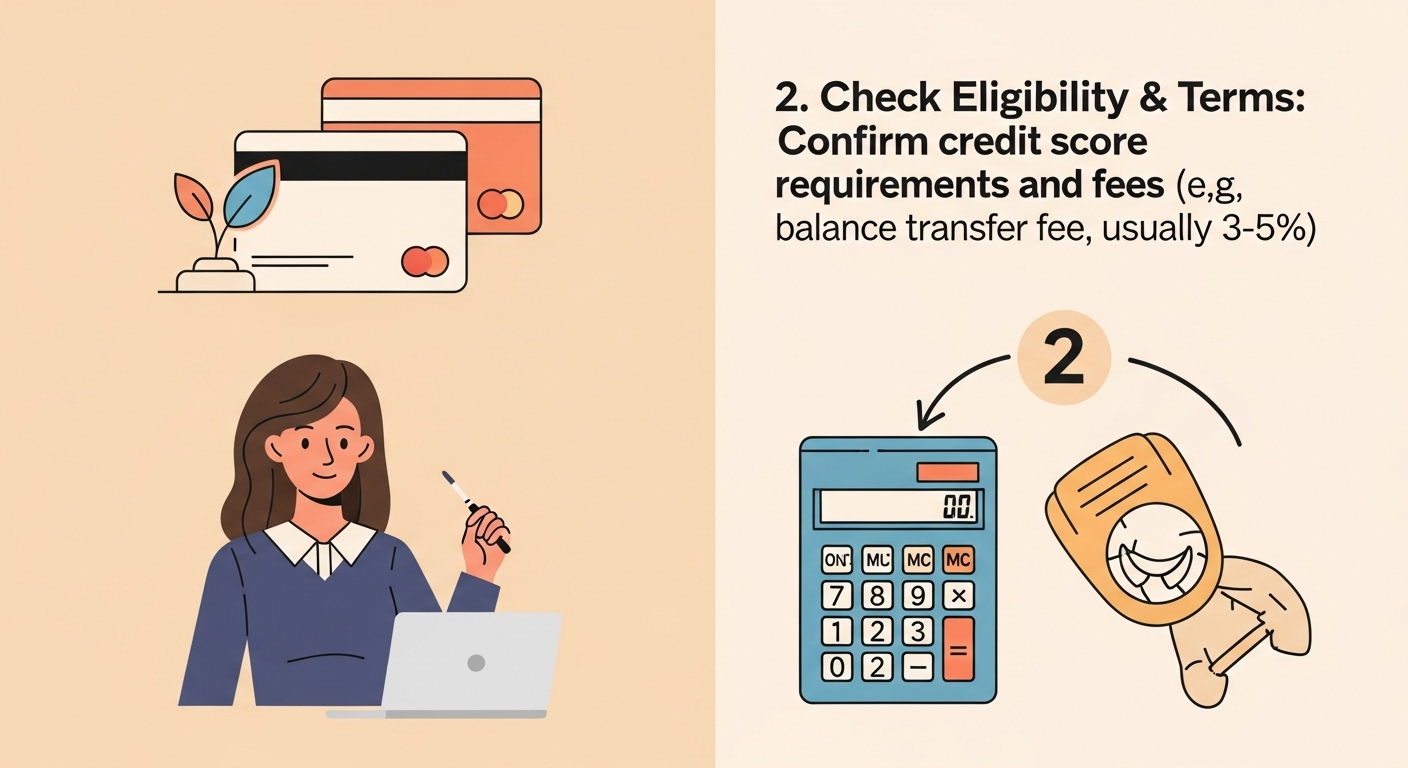How to Transfer Credit Card Debt

Credit card debt can feel like a heavy burden — especially when high interest rates make it difficult to pay off your balance. Fortunately, there’s a smart financial strategy that can help you reduce costs and pay off debt faster: credit card balance transfer, also known as credit card debt transfer.
This method allows you to move your existing debt to another card with a lower or 0% introductory interest rate, helping you save money and simplify your payments.
In this guide, we’ll explain what a credit card balance transfer is, how it works, how to do it safely, and what to watch out for.
1. What Is a Credit Card Balance Transfer?
A credit card balance transfer means moving your outstanding balance from one or more credit cards to another credit card — typically one that offers a lower interest rate or even 0% APR for a limited time.
For example:
If you owe $3,000 on a credit card with 24% interest, transferring it to a card offering 0% interest for 12 months gives you a year to pay off your debt without accumulating new interest.
Essentially, you’re using one card to pay off another, but under better financial terms.
2. Why People Transfer Credit Card Debt
There are several reasons why people choose to transfer their credit card balance:
- To reduce interest payments: The main advantage is saving money on high interest.
- To simplify repayment: Combine multiple debts into one manageable monthly payment.
- To pay off debt faster: Since less money goes toward interest, more goes toward reducing your balance.
- To temporarily improve cash flow: Lower payments can help you stabilize your finances.
It’s a short-term solution designed to give you breathing room — but it only works if used wisely.
3. How a Credit Card Balance Transfer Works
Here’s how the process typically works:
- Apply for a new credit card with a balance transfer offer, often featuring a low or 0% interest rate for a promotional period (e.g., 6–18 months).
- Provide details of the existing card(s) and balances you want to transfer.
- The new bank pays off your old card(s) and adds the transferred amount to your new account.
- You then repay the transferred balance under the new terms — ideally before the promotional rate ends.
It’s important to understand that the promotional interest rate is temporary, and once it expires, standard rates apply.
4. Step-by-Step: How to Transfer Credit Card Debt
Here’s a detailed breakdown of how to do it properly:
Step 1: Check Your Current Debt Situation
List all your current credit cards, balances, interest rates, and minimum payments. This will help you decide how much to transfer and which debts to prioritize.
Step 2: Compare Balance Transfer Offers
Look for a credit card that offers:
- 0% or low introductory APR on balance transfers
- A long promotional period (ideally 12–18 months)
- Low or no balance transfer fees (typically 2–5% of the amount transferred)
- Reasonable interest rate after the intro period
Compare multiple banks and offers to find the most cost-effective option.
Step 3: Apply for the New Credit Card
Once you’ve found the right card, apply online or through your bank. Approval will depend on your credit score, income, and debt-to-income ratio.
Step 4: Request the Balance Transfer
During or after approval, you’ll be asked to provide:
- The account numbers of your old credit cards
- The amount you want to transfer
The new bank will contact your old card issuers and complete the transfer.
Step 5: Continue Paying Until Transfer Is Confirmed
It can take a few days to several weeks for the transfer to complete. Keep making payments on your old cards until the balance is confirmed as zero.
Step 6: Repay Strategically
After the transfer:
- Focus on paying off the debt before the promotional rate expires.
- Avoid using the new card for new purchases (these might not be covered by the low rate).
- Make all payments on time — missing even one could void your 0% offer.
5. Example: How Much You Can Save
Let’s say you have:
- $5,000 balance at 24% interest
- Minimum payment: $150 per month
If you keep this balance, you’ll pay about $1,200 in interest in just one year.
Now, if you transfer it to a 0% APR card for 12 months with a 3% transfer fee ($150), and pay $450 per month:
- You’ll pay off your debt in 12 months.
- You’ll save over $1,000 in interest.
That’s a huge financial advantage — but only if you stick to your payment plan.
6. Advantages of a Balance Transfer
✅ Lower or Zero Interest: The biggest benefit is saving money on interest charges.
✅ Simplified Finances: Combine multiple debts into one payment.
✅ Faster Debt Repayment: More of your money goes toward principal, not interest.
✅ Short-Term Relief: Reduce financial stress while regaining control.
7. Disadvantages and Risks
While balance transfers can be helpful, there are important drawbacks to consider:
⚠️ Balance Transfer Fees: Usually 2–5% of the transferred amount.
⚠️ Limited Time Offers: Once the 0% period ends, the regular APR (often 18–25%) kicks in.
⚠️ Temptation to Overspend: Having a new card with available credit can lead to more debt.
⚠️ Credit Score Impact: Applying for new credit can cause a temporary drop in your credit score.
⚠️ Missed Payments Can Cancel the Offer: Late payments may cause you to lose your promotional rate immediately.
8. Tips for a Successful Balance Transfer
To make the most of your balance transfer:
✅ Create a payoff plan — divide your total debt by the number of months in your 0% period.
✅ Avoid new purchases until the balance is paid off.
✅ Automate your payments to avoid missing due dates.
✅ Don’t close old credit cards — it may negatively affect your credit score.
✅ Check your credit limit — ensure the new card can handle your transfer amount.
9. When a Balance Transfer Is a Good Idea
A balance transfer makes sense if:
- You have good credit and qualify for 0% offers.
- You can repay the balance during the promotional period.
- Your current interest rates are high and costing you money.
- You want to consolidate multiple debts for easier management.
However, if your debt is large or repayment may take years, a debt consolidation loan might be a better option.
10. Alternatives to a Balance Transfer
If a balance transfer isn’t suitable, consider:
- Debt consolidation loans with fixed rates.
- Debt restructuring through your bank.
- Negotiating lower interest rates with your current creditors.
- Credit counseling programs that provide repayment plans and advice.
Final Thoughts
A credit card balance transfer can be a powerful tool for reducing debt and saving money — but only if used responsibly. It’s not a permanent fix, but a strategic opportunity to pay off high-interest balances faster.
To succeed, choose the right card, understand all fees and terms, and make a realistic repayment plan. Use the 0% or low-interest window wisely — because once it ends, your rates will rise again.
Remember: the goal isn’t just to move your debt — it’s to eliminate it. With discipline and planning, a balance transfer can help you take the first major step toward a debt-free future.
